Chapter 8.4: Ancient Greece
Ancient Greece
The ancient Greeks lived in many lands around the Mediterranean Sea, from Turkey to the south of France. They had close contact with other peoples, such as the Egyptians, Syrians, and Persians. The Greeks lived in separate city-states, but shared the same language and religious beliefs.
Archaic Period
Two of the most distinctive forms of free-standing sculpture to emerge during the Archaic period of Greek art (about 600-480 B.C.E.) were statues of youths (kouroi) and maidens (korai).
Kouros (the singular form) is a term used to describe a type of statue of a male figure produced in marble during the Archaic period of Greek art. Such statues can be colossal (that is, larger than life) or less than life-size. They all have a conventional pose, where the head and body can be divided equally by a central line, and the legs are parted with the weight placed equally front and back. The male figures, usually in the form of naked young men, acted both as grave markers and as votive offerings, the latter perhaps intended to be representations of the dedicator. The female figures served similar functions, but differed from their male counterparts in that they were elaborately draped.
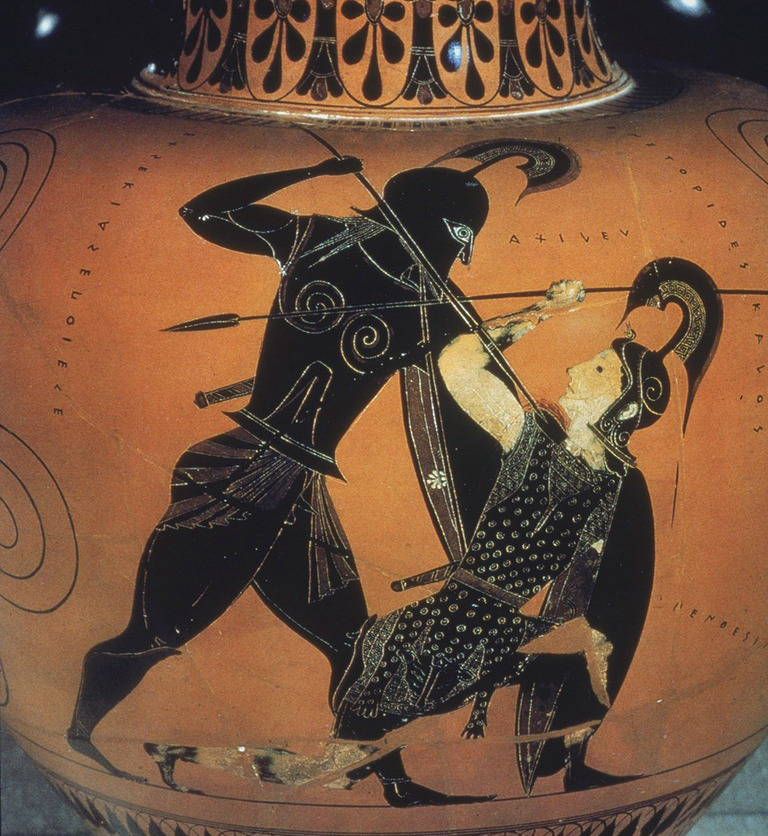
The mouth is invariably fixed in a smile, which is probably a symbolic expression of the arete (“excellence”) of the person represented. It used to be thought that all kouroi were representations of the god Apollo. However, although some may be representations of gods or heroes, many were simply grave markers. The kouros was not intended as a realistic portrait of the deceased, but an idealized representation of values and virtues to which the dead laid claim: youthful beauty, athleticism, and aristocratic bearing, among others.
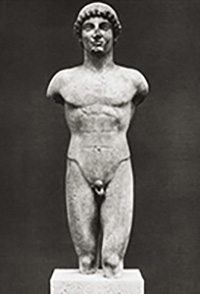
Image and Video
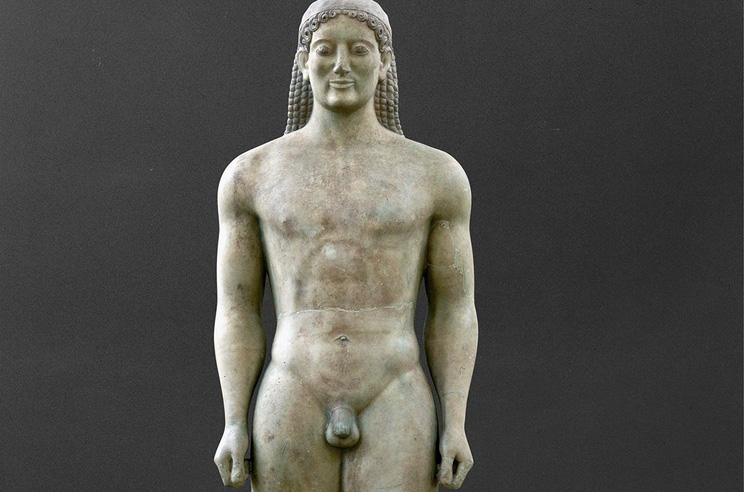
Anavysos Kouros (4:59)
Classical Period
By around 500 B.C.E. “rule by the people,” or democracy, had emerged in the city of Athens. Following the defeat of a Persian invasion in 480-479 B.C.E., mainland Greece and Athens, in particular, entered into a golden age. In drama and philosophy, literature, art and architecture, Athens was second to none. The city’s empire stretched from the western Mediterranean to the Black Sea, creating enormous wealth. This paid for one of the biggest public building projects ever seen in Greece, which included the Parthenon.
Ancient Greece also played a vital role in the early history of coinage. As well as making some of the world’s earliest coins, the ancient Greeks were the first to use them extensively in trade.
Image and Video
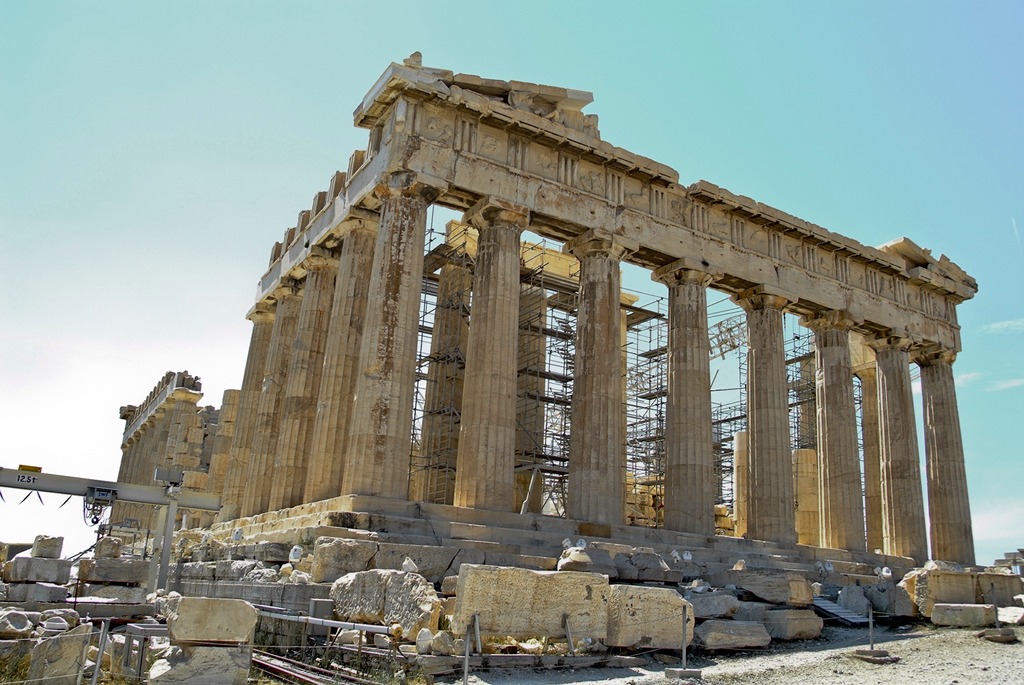
The Parthenon (Acropolis) (16:04)
Hellenistic Period
Following the death of Alexander and the division of his empire, the Hellenistic period (323-31 B.C.E.) saw Greek power and culture extended across the Middle East and as far as the Indus Valley. When Rome absorbed the Greek world into its vast empire, Greek ideas, art and culture greatly influenced the Romans.
Alexander was always shown clean-shaven, which was an innovation: all previous portraits of Greek statesmen or rulers had beards. This royal fashion lasted for almost five hundred years and almost all of the Hellenistic kings and Roman emperors until Hadrian were portrayed beardless.
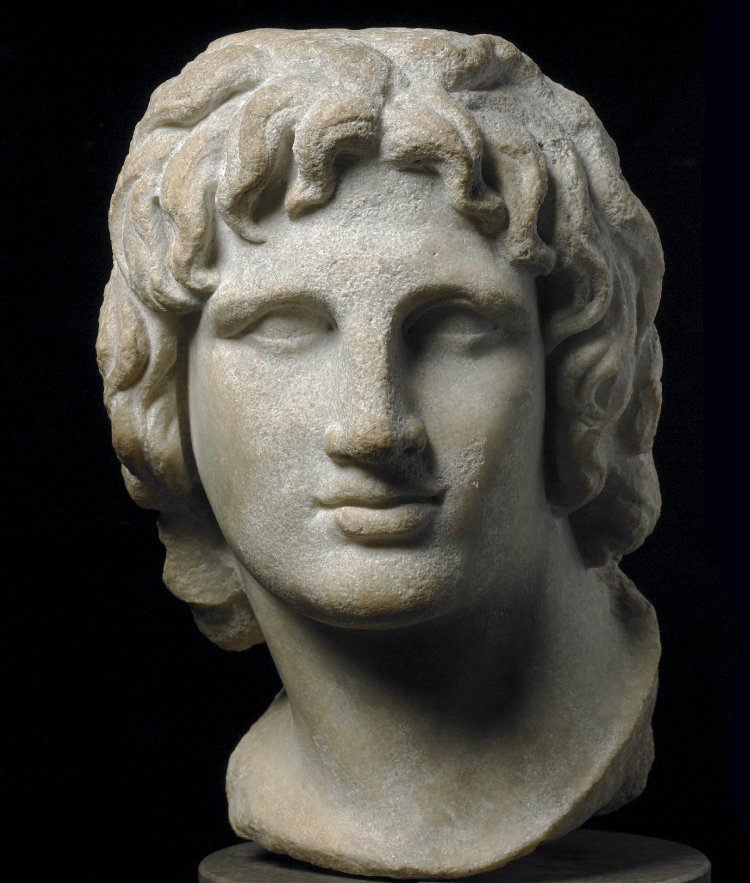
Images and Videos
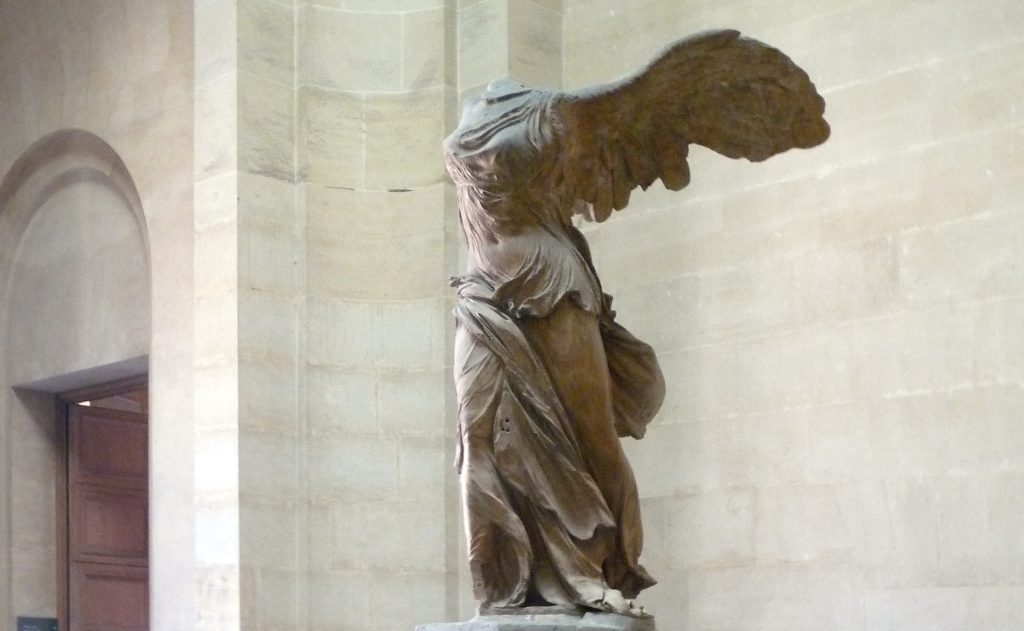
The Winged Victory (Nike) of Samothrace (3 minutes)
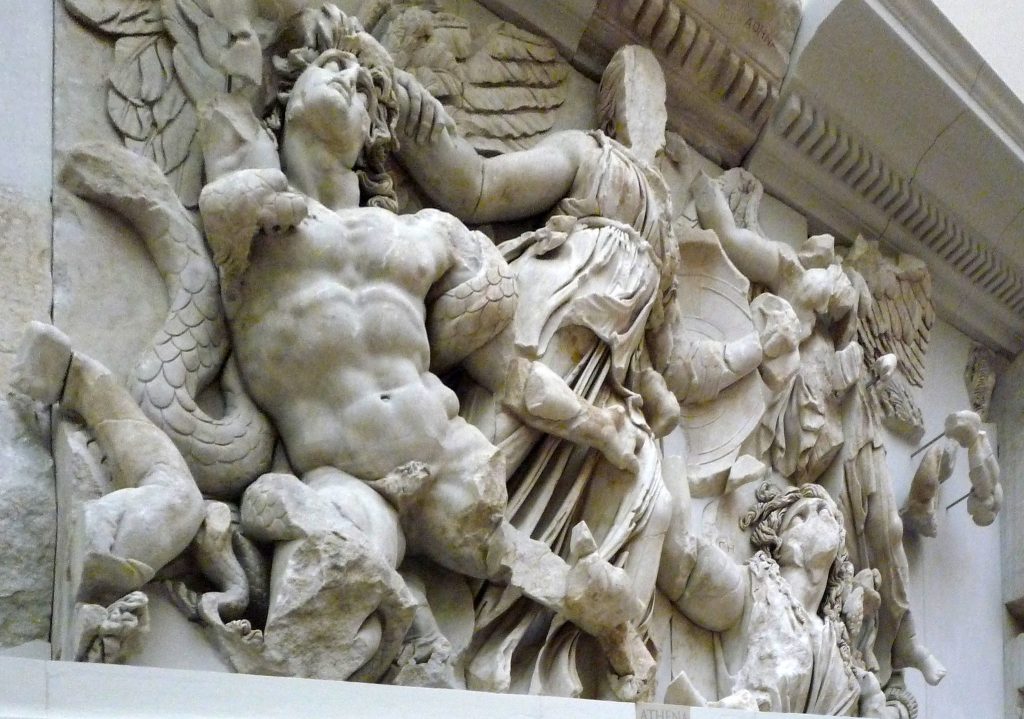
Great Altar of Zeus and Athena at Pergamon
Media Attributions
- Figure 1. Exekias, 6th cent. B.C, Neck-Handled Amphora: Obverse: Achilles killing Penthesilea, c.530 B.C. (British Museum; Image source: University of California, San Diego, via Artstor. Used with permission, for education use only).
- Figure 2. The Strangford Apollo, c. 500-490 B.C.E., 101 cm high, perhaps from Cyclades, Aegean Sea (Image source: © Trustees of the British Museum. Used with permission, for education use only).
- Figure 3. Anavysos Kouros, 6th century B.C.E. (National Museum of Archaeology, Greece; Image source: Erich Lessing/ART RESOURCE, N.Y. via Artsy. Used with permission, for education use only).
- Figure 4. Parthenon, Built between 448 and 438 BC at the site of the Archaic hekatompedon. (Athens, Greece; Image source: Shmuel Magal, Sites and Photos via Artstor. Used with permission, for education use only).
- Figure 5. Marble portrait head of Alexander the Great. Hellenistic Greek, 2nd-1st century B.C.E. (Image source: © Trustees of the British Museum. Used with permission, for education use only).
- Figure 6. Nike of Samothrace, Lartos marble (ship), Parian marble (figure), c. 190 B.C.E. (Louvre, Paris; Image source: Steven Zucker via Flickr) is licensed under a CC BY-NC-SA (Attribution NonCommercial ShareAlike) license
- Figure 7. The Pergamon Altar (Gigantomachy), c. 200-150 B.C.E. (Pergamon Museum, Berlin; Image source: Steven Zucker via Flickr) is licensed under a CC BY-NC-SA (Attribution NonCommercial ShareAlike) license
Candela Citations
- Ancient Greece, An Introduction. Authored by: The British Museum. Provided by: Smarthistory. Retrieved from: https://smarthistory.org/ancient-greece-an-introduction/. License: CC BY-NC-SA: Attribution-NonCommercial-ShareAlike

